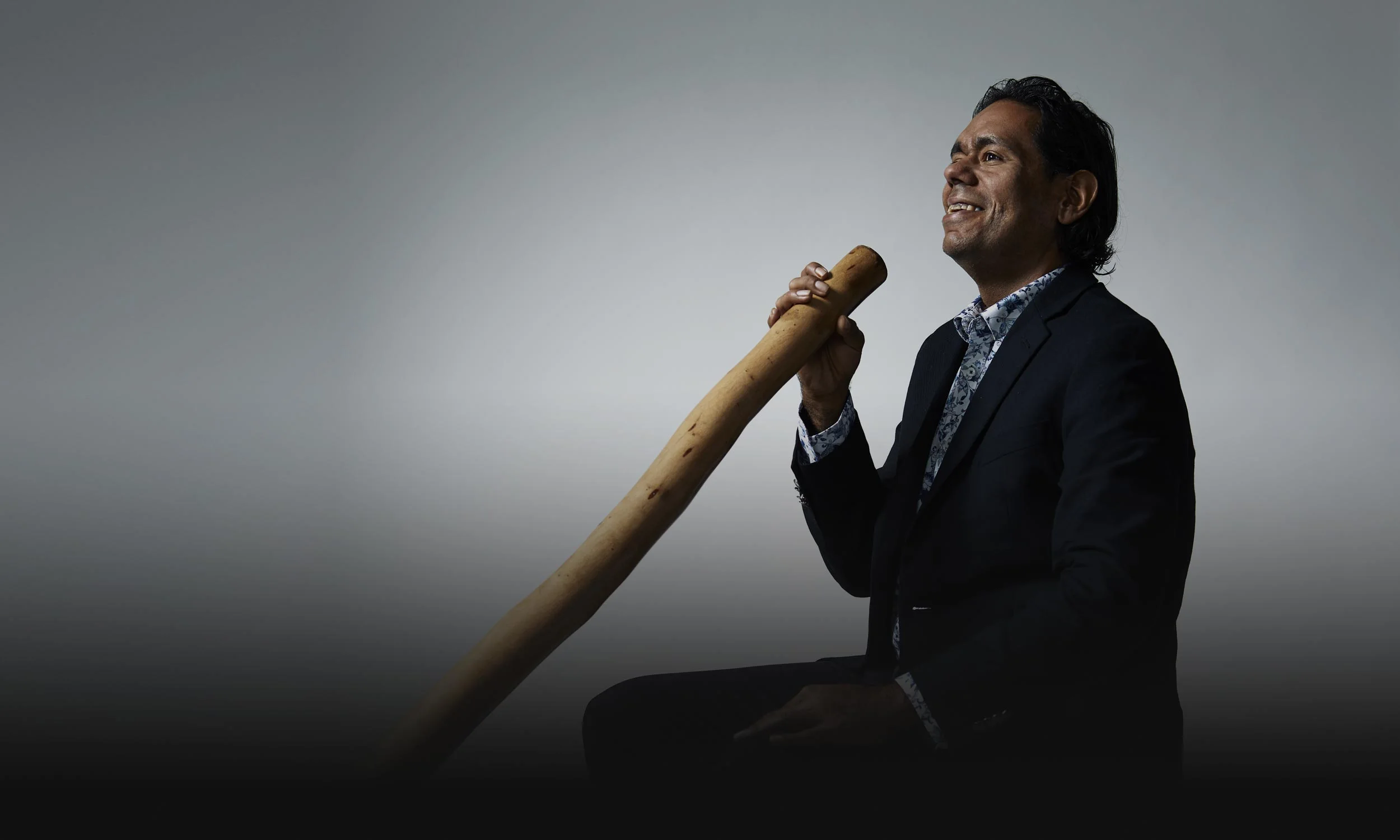- William Barton
Apii Thatini Mu Murtu (2021)
(To Sing and Carry a Coolamon on Country Together)- Wise Music G. Schirmer Australia Pty Ltd (World)
Commissioned for Queensland Symphony Orchestra by Justice Anthe Philippides
- 2.2.0(II:bcl)+2bb-cl.2/0+4f-hn.0+3bb-tpt.2+btbn.1/timp.perc.sd(suspcym).bdr(tbells).mba/hp/str
- Didgeridoo
- 20 min
Programme Note

"In 1998 at just 17 years of age, I began my journey with Queensland Symphony Orchestra,
and in 2002 I performed with them again, premiering Peter Sculthorpe’s Earth Cry. Now,
23 years later, I feel very honoured and humbled to have the opportunity to perform
my newest music alongside my QSO colleagues once again. Apii Thatini Mu Murtu or
To sing and carry a coolamon on country together is about home – my homecoming
to Queensland, to perform with my home Orchestra; going back to country and
reconnecting with Kalkadoon land; and a unified connection to the land that I hope all
who hear this work will feel.
"This work is about reconnection to the mother country and paying homage and respect
to our language, to the land, and to our dreaming. Last year I had the privilege of having a
2020 Prelude Residency at Peggy Glanville-Hicks Composers House where I began working
on what you will hear today. At the piano I let my ideas flow and visualised where I am – I
am in Kalkadoon country flying above the landscape like an eagle. I can see the rugged
beauty of the escarpment over the Argylla and Selwyn Ranges, the tinted pinks and reds
of the land in winter time (that magic time of renewal and fresh air). I am reconnecting to
country and breathing life into it for my dad who is buried out there, thinking of where he is.
"While this work is my own reconnection to country and language, I wanted this work to
be a part of the continued revitalisation of language. Language should be accessible not
only for our own people but for everyone. I want people to walk away from this experience
having a melody or a language word from Kalkadunga, my people, resonate with them.
In this busy world today many miss out on the lullaby of our ancestors – of our grandfathers,
uncles, and aunties singing to us as children. Music is so much embedded in our DNA
and it has to be revitalised always. I see this piece as a revitalisation of connection and of
country – when you sing to a dry river bed, you’re singing up country. When you reconnect
to country, you’re energising it and you’re getting energy back from it, and the more we
sing the song together, the more energy we create for peace and harmony. When people
hear this work, you know it is welcoming people into a shared experience of reconnection;
the musicians, me as a composer, and Benjamin Northey as conductor are a unified team
on stage to tell the story of our people and our unique Australian sound.
"From my first appearance on stage with QSO to now, I’ve come full circle and I feel
this work represents a legacy of composing new Australian works. I would like to
thank Queensland Symphony Orchestra and The Honourable Anthe Philippides who
commissioned this work and for recognising the importance of supporting new works
to make sure new music is always being created. Thank you to my supporters who have
journeyed with me over the last 20 years. Thank you to my mum, for her support over the
years and to my partner, Véronique Serret, who has been the musical strength behind
many things for me."
- William Barton, 2021

 Located in the UK
Located in the UK
 Located in the USA
Located in the USA
 Located in Europe
Located in Europe
